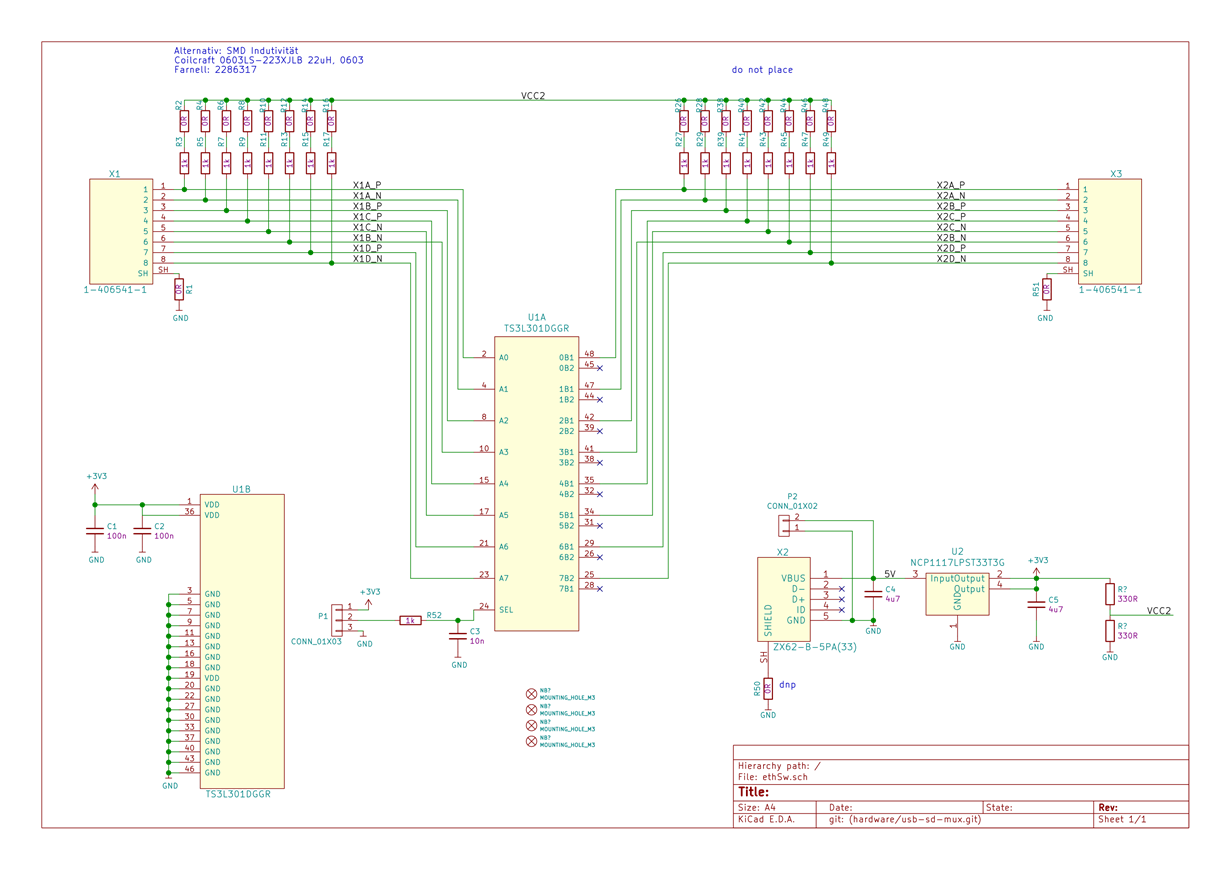Hi,
I am working on a design that is supposed to be able to disconnect an Gigabit Ethernet (1000 Base-T) Ethernet link between a Switch and a Device under Test.
Usually the test-switch and the DUT will be powered from the same power outlet - thus I don't worry about ground-shift on the mains side.
And usually I assume short cable length < 10m.
The obvious idea was to use RF-rated relays for this job. But those usually have a huge package, are cost-intensive and (depending on type) may need quite a lot of power to operate.
I am currently thinking about using the TS3L301 or TS3L501 to solve this problem.
My setup is currently:
- The switch is powered with a locally generated 3V3-supply. This supply can be referenced to the GND of the DUT or to the GND of a test-server that should be on the same power outlet.
- To reference the potential-free Ethernet-Link to my local GND I use a series combination of an inductor (22uH) and a resistor (1kR) to archive a DC-coupling to VCC/2. This gives me 330R for DC and >10k @ 200MHz
- I accept the impedance mismatch between the twisted pair cable and the switch and do not do any impedance matching.
- I will not use this design with PoE since it will destroy the switch.
Has anyone tried this?
Or has an idea of why it will not work? For example I am currently unsure how high the differential level on the Ethernet-Lines really are.
I have attached my current test-board schematic.
Kind Regards
Chris



